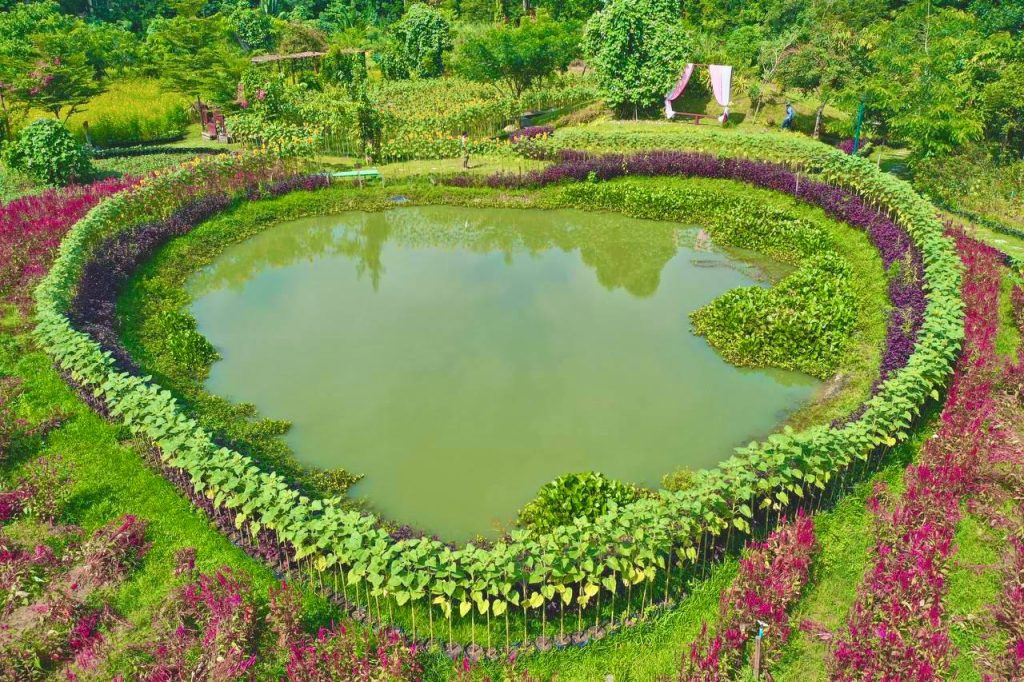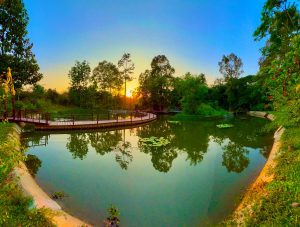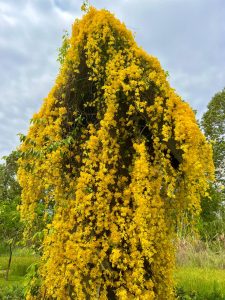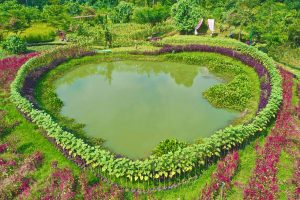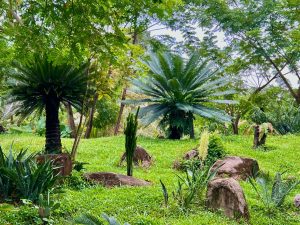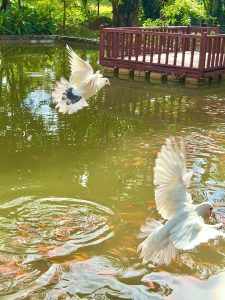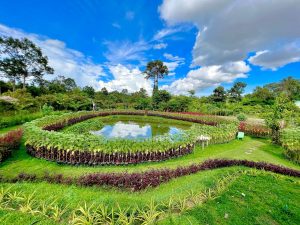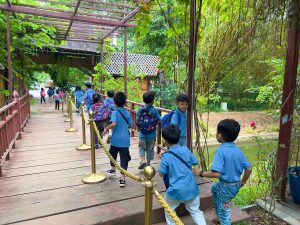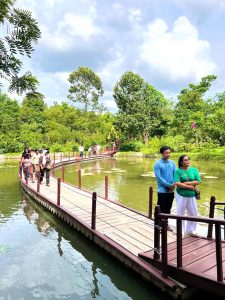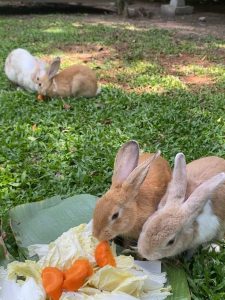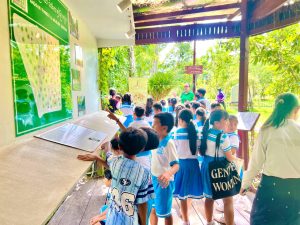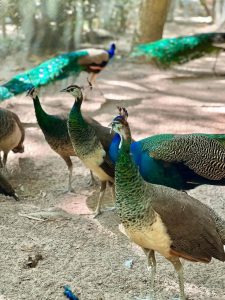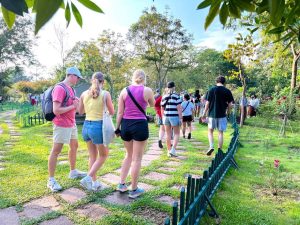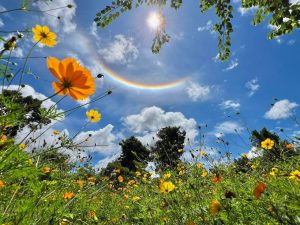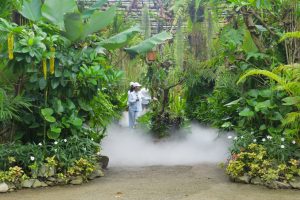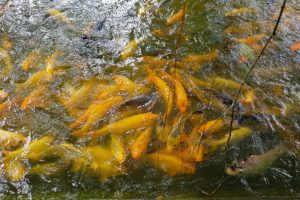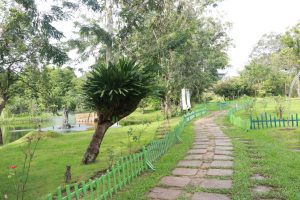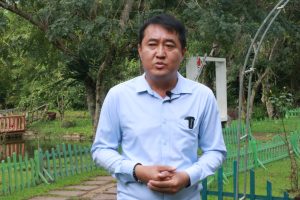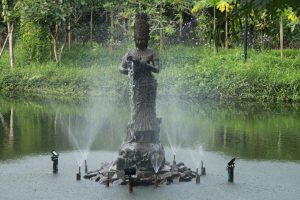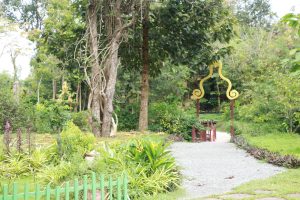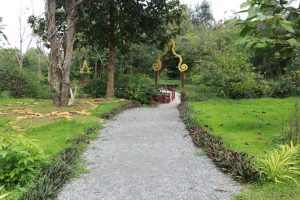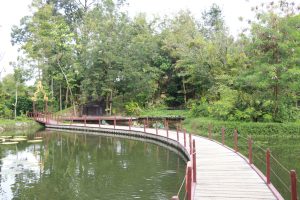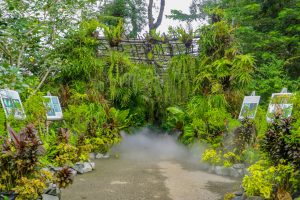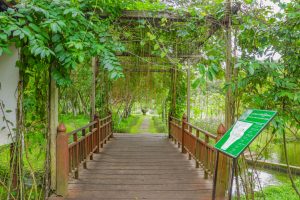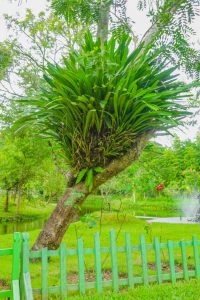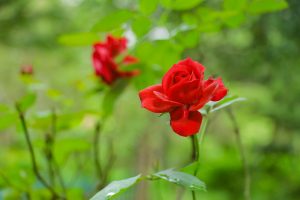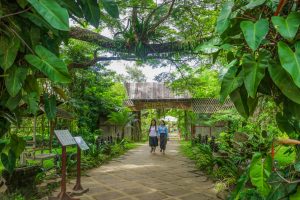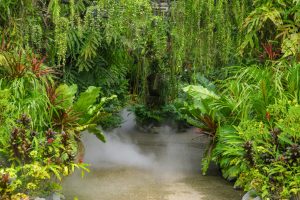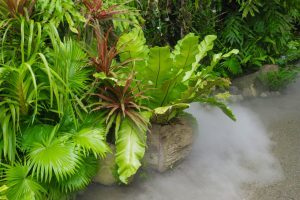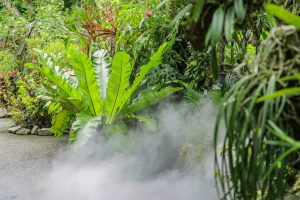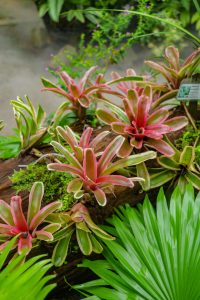បន្ទាប់ពីបើកដំណើរការជាផ្លូវការ កាលពីឆ្នាំ២០២២មក សួនរុក្ខជាតិអង្គរ ឬគេស្គាល់ជាភាសាអង់គ្លេសថា Angkor Botanical Garden ត្រូវបានអាជ្ញាធរជាតិអប្សរា ខិតខំយកចិត្តទុកដាក់ក្នុងការថែទាំ អភិវឌ្ឍន៍ និងបង្កើនភាពទាក់ទាញជាបន្តបន្ទាប់ ហើយបានប្រែក្លាយជាគោលដៅទេសចរណ៍ និងពេញនិយម សម្រាប់ការទស្សនាក្រៅពីប្រាង្គប្រាសាទនានា។
លោក មាឃ បូរ៉ា មន្ត្រីគ្រប់គ្រងសួនរុក្ខជាតិអង្គរ បានឱ្យដឹងថា ក្នុងទំហំផ្ទៃដីប្រមាណ១៥ហិកតា សួនរុក្ខជាតិអង្គរ ត្រូវបានបែងចែកជា៥ផ្នែកខុសៗគ្នា រួមមាន៖ សួនឱសថ សួនផ្កា សួនអម្បូរត្នោត សួនលំនៅស្ថានខែ្មរ និងសត្វព្រៃជាដើម។ មកដល់ពេលនេះ អាជ្ញាធរជាតិអប្សរា បានយកចិត្តទុកដាក់ក្នុងការថែទាំ និងរៀបចំ រហូតមានការវិវត្តរីកចម្រើនថ្មីៗ ដូចជា៖ សួនផ្កាកូលាប និងសួនកេសកូល ក៏បានបង្កើតបន្ថែម រហូតមានភាពទាក់ទាញទេសចរជាតិ និងអន្តរជាតិ បានចូលមកទស្សនាជាហូរហែ។ ចាប់តាំងពីបើកដំណើរការមក ទេសចរជាតិ និងអន្តរជាតិ ចំនួនប្រមាណ៦០ម៉ឺននាក់ហើយ បានចូលមកទស្សនានៅទីនេះ ដោយឥតបង់ថ្លៃ។
លោក មាឃ បូរ៉ា បន្តថាសួនរុក្ខជាតិអង្គរ គឺជាមជ្ឈមណ្ឌលមួយ ដែលប្រមូលផ្តុំទៅដោយរុក្ខជាតិកម្រៗ ជិតផុតពូជជាច្រើនប្រភេទ ដោយរុក្ខជាតិខ្លះ ភ្ញៀវទេសចរនៅមិនទាន់បានស្គាល់នៅឡើយ។ ហេតុដូច្នេះទេសចរ មិនត្រឹមតែទស្សនា ដើម្បីទទួលបានអារម្មណ៍ថ្មីប្លែកជាមួយទេសភាពបៃតង និងទស្សនាសត្វកម្រៗប៉ុណ្ណោះទេ ប៉ុន្តែសួនរុក្ខជាតិអង្គរ ជាទីតាំងសិក្សាស្រាវជ្រាវបន្ថែម សម្រាប់សិស្សានុសិស្សថែមទៀតផង។
ត្បិតសួនរុក្ខជាតិអង្គរ មានទំហំធំលាតសន្ធឹងរហូតដល់១៥ហិកតា ដូច្នេះការថែទាំសួន ត្រូវការកម្លាំងពលកម្មច្រើនសម ដោយបែងចែកការថែទាំទៅតាមលក្ខណៈបច្ចេកទេសរៀងៗខ្លួន។
មន្ត្រីគ្រប់គ្រង សួនរុក្ខជាតិអង្គរបានបន្ថែមទៀតថា តាមរយៈចក្ខុវិស័យវែងឆ្ងាយ របស់ថ្នាក់ដឹកនាំអាជ្ញាធរជាតិអប្សរា និងបន្តអភិវឌ្ឍន៍សួនរុក្ខជាតិអង្គរ ឱ្យក្លាយជាសួនកម្រិតស្តងដារអន្តរជាតិ ដូចសួនដទៃទៀតនៅលើពិភពលោក។
សូមជម្រាបថា សួនរុក្ខជាតិអង្គរ មានទីតាំងនៅតាមបណ្ដោយ រុក្ខវិថីព្រះសីហនុ ជិតបុរីប្រិមប្រិយ ។
សួនរុក្ខជាតិអង្គរ បើកឱ្យទេសចរជាតិ និងអន្តរជាតិ ចូលទស្សនាដោយឥតគិតថ្លៃ ចាប់ពីម៉ោង ៨ព្រឹក រហូតដល់ម៉ោង៦ល្ងាច ចាប់ពីថ្ងៃពុធ រហូតដល់ថ្ងៃច័ន្ទ និងថ្ងៃបុណ្យជាតិ លើកលែងថ្ងៃអង្គារ៍ប៉ុណ្ណោះ៕
អត្ថបទ៖ការិយាល័យផ្សព្វផ្សាយ
Since its official opening in 2022, the Angkor Botanical Garden has been carefully maintained, expanded, and enhanced by the APSARA National Authority. Today, it has become a popular attraction for visitors seeking experiences beyond the temples.
According to Mr. Meak Bora, Manager of the Angkor Botanical Garden, the 15-hectare garden is divided into five key sections: the medicinal garden, flower garden, palm garden, Khmer habitat garden, and wildlife zone. In addition, new features such as the rose garden and orchid garden have been developed, drawing a growing number of national and international tourists. Since opening, the garden has welcomed approximately 600,000 visitors free of charge.
Mr. Meak Bora emphasized that the Angkor Botanical Garden serves as an important center for rare and endangered plant species, many of which remain unfamiliar to the public. Beyond offering a refreshing natural landscape and opportunities to observe wildlife, the garden also serves as a valuable learning and research space for students.
Despite its vast size, the garden is meticulously maintained by specialized teams assigned to each technical area. Looking ahead, Mr. Meak Bora highlighted that, under the long-term vision of the APSARA National Authority, the Angkor Botanical Garden will continue developing toward international standards, comparable to renowned botanical gardens worldwide.
The Angkor Botanical Garden is located along Preah Sihanouk Boulevard near Borey Prim Prai. It is open to both national and international visitors free of charge from 8:00 AM to 6:00 PM, Wednesday through Monday, including national holidays (closed on Tuesdays).
Article by the Office of Communication
Photos by Hap Kim An, Soeun Bunsor, and the Angkor Botanical Garden
Translation by Net Phirun

